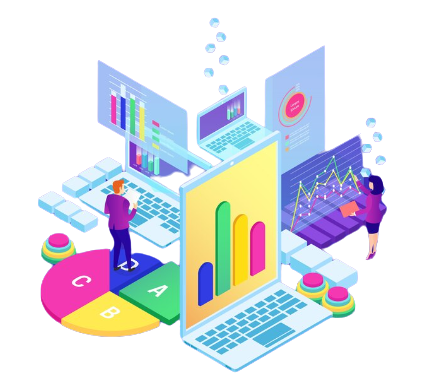In today’s data-driven world, organizations need a comprehensive and unified approach to managing and harnessing their data assets. Data fabric emerges as a powerful solution that enables organizations to break down data silos, integrate diverse data sources, and derive valuable insights.
In the age of data-driven decision-making, organizations are faced with the challenge of managing and harnessing vast amounts of data from various sources. Data fabric has emerged as a powerful solution. That enables organizations to unify and integrate their data seamlessly. And providing a holistic view for generating valuable insights. In this blog post, we will explore the concept of data fabric, its benefits, and how it empowers organizations to unlock the full potential of their data.
Understanding Data Fabric
Data fabric is a modern data architecture that enables organizations to integrate, connect, and manage their diverse data sources in a unified and cohesive manner. It provides a framework that simplifies data access, integration, and analysis, regardless of the data’s location or format. It acts as a virtual layer that abstracts the complexities of data management. Making it easier for organizations to derive meaningful insights from their data assets.

The Benefits of Data Fabric
- Data Integration: It allows organizations to seamlessly integrate data from disparate sources, such as databases, data lakes, cloud platforms, and external sources. It eliminates data silos and enables a unified view of the data, facilitating cross-functional analysis and decision-making.
- Real-Time Data Access: It enables real-time data access, ensuring that organizations can work with the most up-to-date information. This is particularly crucial in fast-paced industries where real-time insights drive critical business decisions.
- Scalability and Flexibility: It provides scalability and flexibility, allowing organizations to handle growing volumes of data and adapt to changing business needs. It can accommodate various data types, such as structured, semi-structured, and unstructured data, enabling organizations to work with diverse datasets.
- Data Governance and Security: It incorporates robust data governance and security mechanisms, ensuring that data is protected, compliant with regulations, and accessible only to authorized users. It provides granular control over data access, usage, and privacy.
Key Components
- Data Integration: Data integration tools enable organizations to collect, transform, and load data from various sources into a unified data fabric. These tools ensure data consistency, quality, and reliability throughout the integration process.
- Data Virtualization: Data virtualization technology allows organizations to access and query data from different sources as if it were stored in a single location. It provides a virtual view of the data, eliminating the need for data movement or replication.
- Metadata Management: Metadata management ensures that organizations have a clear understanding of the data within the data fabric. It provides comprehensive metadata, including data lineage, data definitions, and data relationships, facilitating data discovery and governance.
- Data Cataloging: Data cataloging tools enable organizations to create a centralized catalog of available data assets within the data fabric. This allows users to easily search, discover, and understand the available data resources for analysis and decision-making.
Empowering Insights with Data Fabric
- Enhanced Data Analytics: It simplifies the process of data access and integration, enabling organizations to perform advanced analytics and gain valuable insights. With a unified view of data, organizations can identify patterns, trends, and correlations that lead to actionable insights.
- Improved Decision-Making: By providing a holistic view of data, data fabric empowers organizations to make informed decisions based on accurate and timely information. It enables stakeholders to access relevant data quickly and supports data-driven decision-making at all levels of the organization.
- Agile Data Management: It allows organizations to respond quickly to changing business requirements and data needs. It provides agility in data management, enabling organizations to adapt their data strategies and infrastructure as new technologies and data sources emerge.
- Accelerated Innovation: It fosters innovation by providing a foundation for exploring new data-driven opportunities. It enables organizations to leverage their data assets and collaborate across departments. And drive innovation through advanced analytics, machine learning, and AI.
Conclusion
In today’s data-driven world, organizations need a comprehensive and unified approach to managing and harnessing their data assets. Data fabric, combined with Tanbits‘ big data services, emerges as a powerful solution. That enables organizations to break down data silos, integrate diverse data sources, and derive valuable insights. By leveraging data fabric, organizations can unlock the full potential of their data, enabling seamless data access, analysis, and decision-making. As data continues to grow exponentially, embracing data fabric will be a critical step for organizations. Seeking to thrive in the digital era and gain a competitive edge.
BACK










